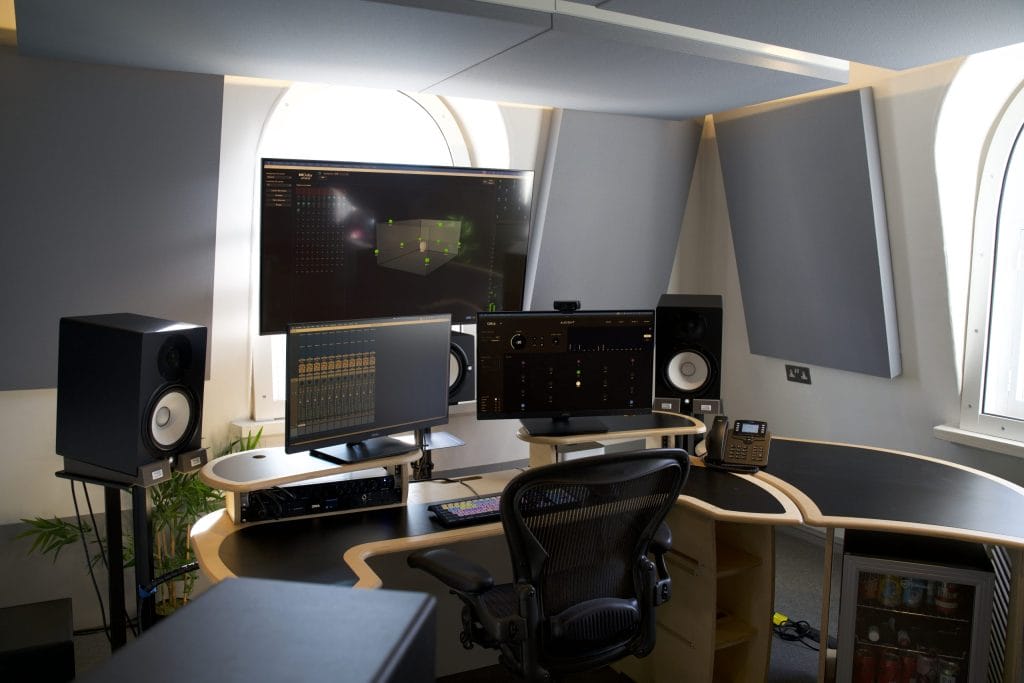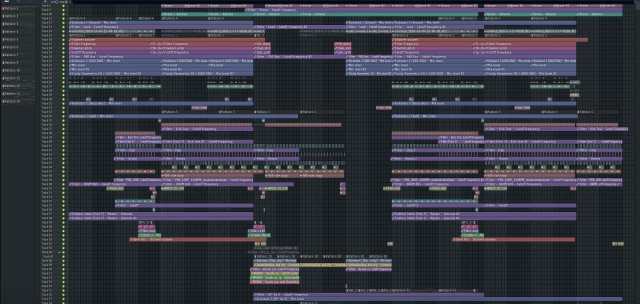how2fly’s latest single, Hold You, which dropped on March 28th on Headroom Records, and it’s one of those tracks that sneaks up on you. It plays with the tension between holding on and letting go, capturing that bittersweet nostalgia you don’t realize is important until it’s already slipping away.
Sonically, Hold You is built around a plucky Serum lead that shifts and bends over time, giving the melody a natural, expressive quality. To add movement, how2fly automated pitch drift, letting each note subtly bend and breathe. The lead starts filtered down and gradually opens into the drop, blending with a UDO SUPER 6 pad for warmth. A little soft clip distortion on the sine wave adds just enough bite to keep it from getting lost in the mix.
On the processing side, how2fly kept things tight—Serum’s built-in FX handled most of the heavy lifting, with delay and reverb designed as part of the sound rather than an afterthought. Soundtoys’ Crystallizer makes an appearance too, adding a touch of unpredictability to the lead’s transitions.
And if you listen closely to the vocal chops in the second half of the first drop, you’ll hear Mishby doing its thing, introducing controlled bits of glitch and pitch drift to give the section a more organic, imperfect feel.
It all comes together in a track that feels effortless but is packed with detail.
Let’s let how2fly break it down in the latest edition of How It Was Made.

Synth Lead: Serum
If you are a producer, you definitely know about Serum. I usually lean towards U-he Diva or Synplant for leads, but for Hold You, Serum felt right. It’s easy to get a simple sound out of it in seconds, but you can also shape it exactly how you want.
The lead in Hold You is a simple plucky sound built from an analog sine wave. To add movement, I automated a couple of parameters, including pitch drift. Each note subtly bends over time, adding an extra layer of expressiveness.
In the full track, this pluck lead gradually opens up. It starts with a low-pass filter and slowly rises into the drop. It’s layered with a UDO SUPER 6 pad, which adds analog warmth. The interaction between the Serum lead’s pitch modulation and the slight drift of the Super 6 creates a dreamy, slightly unstable feel. Sound design is always about how elements interact in the mix, not just individual patches.
Processing of the Synth Lead: Serum

I kept the processing simple, using only Serum’s built-in FX. Sometimes stacking plugins is fun, but everything I needed was already there—distortion, EQ, delay, and reverb.
The distortion was key. I pushed the soft clip hard to give the sine wave more grit, adding contrast to its naturally soft character. That balance between clean and distorted made it stand out.

Reverb and delay weren’t just mix effects; they were part of the sound. Finding the right space is crucial. Valhalla and Soundtoys make great FX, but even stock plugins can work if you experiment and dial them in properly.
Processing of the Synth Lead: Crystallizer

Crystallizer is a granular effect that chops up audio and spits it back out in reversed, pitched, and repeated fragments. It adds a dreamy texture, making a sound feel more alive. It’s a big part of my how2fly sound.
I used it subtly on the pluck lead to create extra space. Reverse mode helped notes transition more smoothly. If I had turned it up more, I could have relied less on Serum’s internal delay, but it was all about finding balance.
The key with this effect is not overdoing it. Too much, and it can overshadow the melody. I automated the mix knob throughout the track—pulling it back in the drops and letting it expand in the breakdowns.
Processing and Creative Plugins: Mishby

Mishby might look chaotic, but it’s an incredible plugin. I mainly used it on the vocal chops in Hold You, which you can hear in the second part of the first drop. It adds pitch drift, glitches, distortion, and noise for a lo-fi feel.
I focused on the glitch function, adjusting the probability and intensity under the Nice section. That randomness helped make the vocal chops feel more organic and emphasized the emotional side of the track.
The trick with Mishby is knowing when to rein it in. It can easily spiral out of control, but when used intentionally, it adds imperfections that make everything feel more human. It reminds me of some modular rig effects—unpredictable, but in the best way.
Quick Fire Tips For Making Emotional Dance Music
Tip #1: Emotions First – Chords are everything. Before touching sound design, play your progression on a piano or basic synth patch. If it doesn’t hit emotionally without all the effects and textures, it won’t suddenly come alive later. Strip everything back, make sure the chords alone tell a story, then start shaping the sound.
Tip #2: Creating Movement – Subtle modulation for an emotive synth is essential. Automate a lot. On everything I described, modulation and automation were key in building my sound. It is what adds a human touch to a digital sound. That human factor is what makes your music unique and resonate with people. It is what creates unexpected moments in your songs and keeps people curious, wanting to stay throughout the whole track.
Tip #3: Loops & Resampling – A lot of my songs are based on a small loop. Usually, one vocal line that is then being cut and resampled in lots of different ways to keep it interesting. It is something I have learned from listening to Fred Again’s music. When he samples a full vocal topline, he doesn’t “respect” the original work, he gets away from it. He recreates sentences, chops things up until he gets to fulfill his vision, leading to unexpected places along the way.
Tip #4: Creating your sound – Everyone has access to the same VSTs and samples, but all of the decisions you take when producing create your sound. Maybe you always add a subtle chorus to leads or a tiny bit of pitch drift to pads. All of those details become your signature. Focus on them, and over time, listeners will recognize your tracks before they even check who made them.
The post How It Was Made: how2fly – Hold You (Headroom Records) appeared first on Magnetic Magazine.






